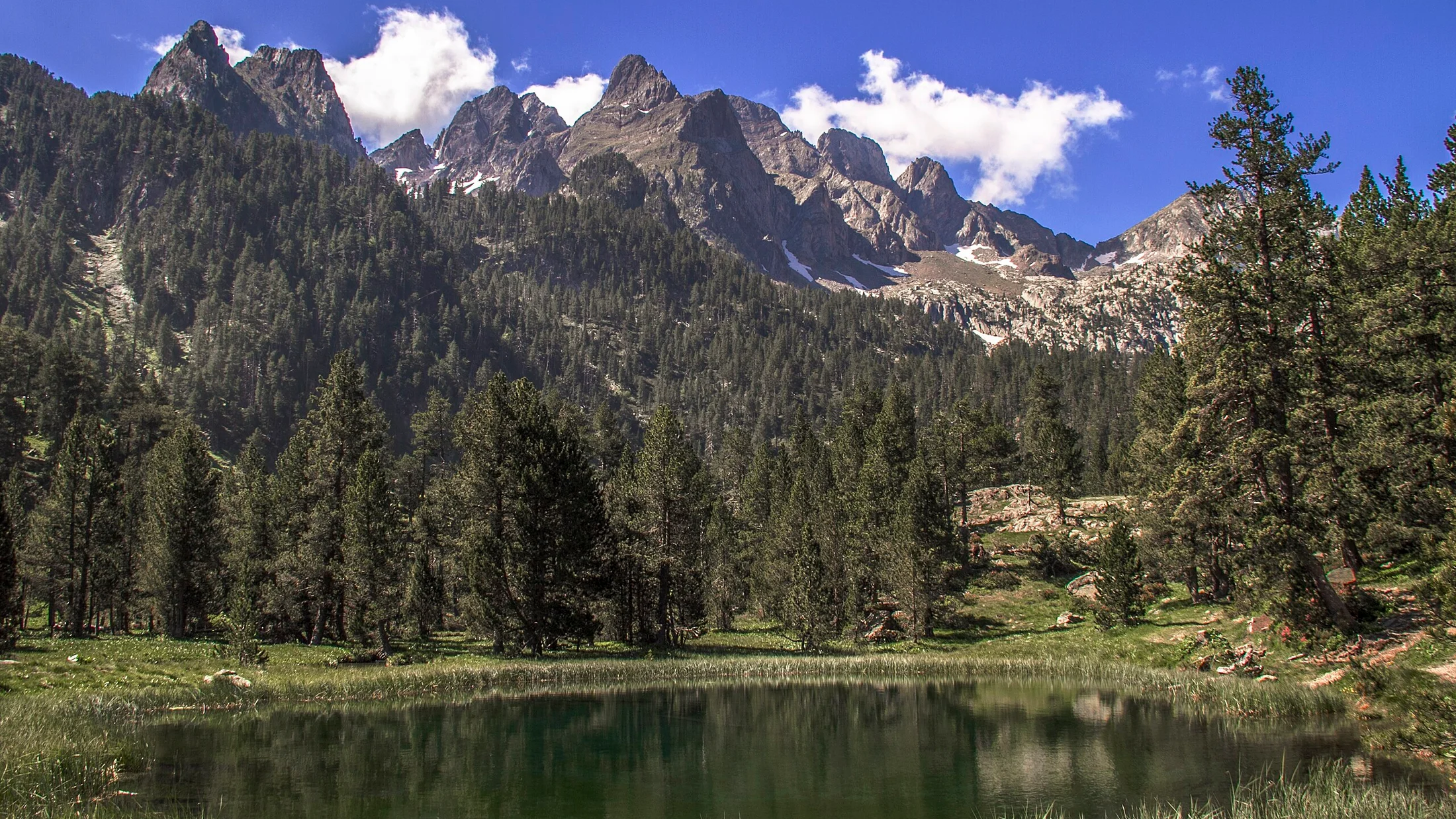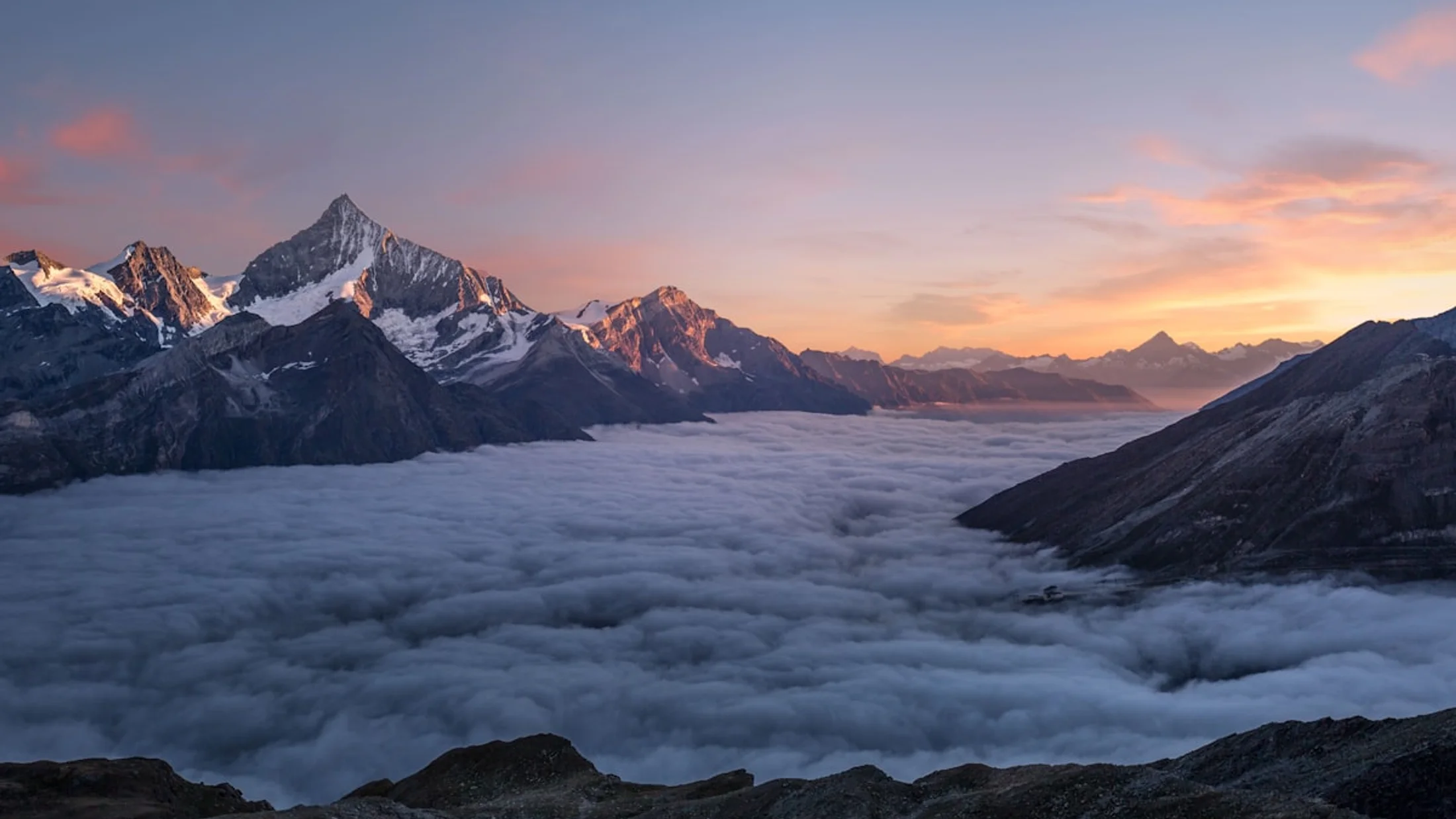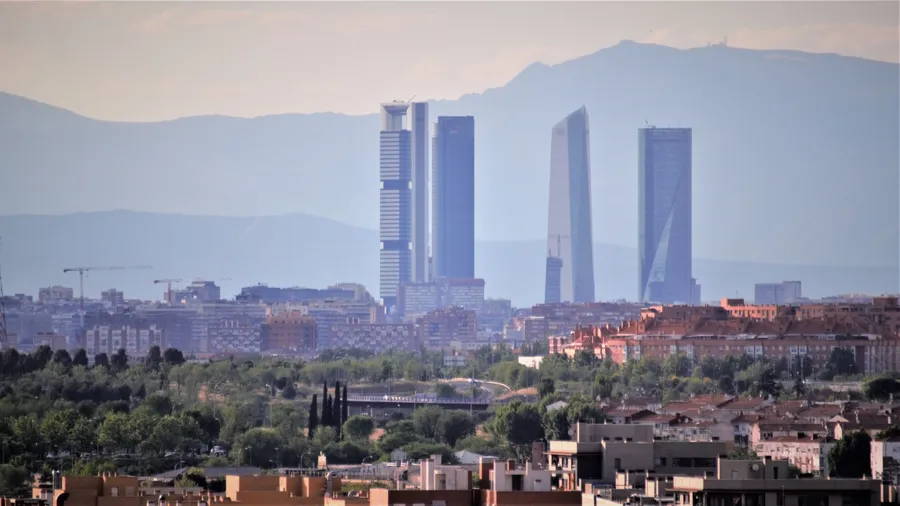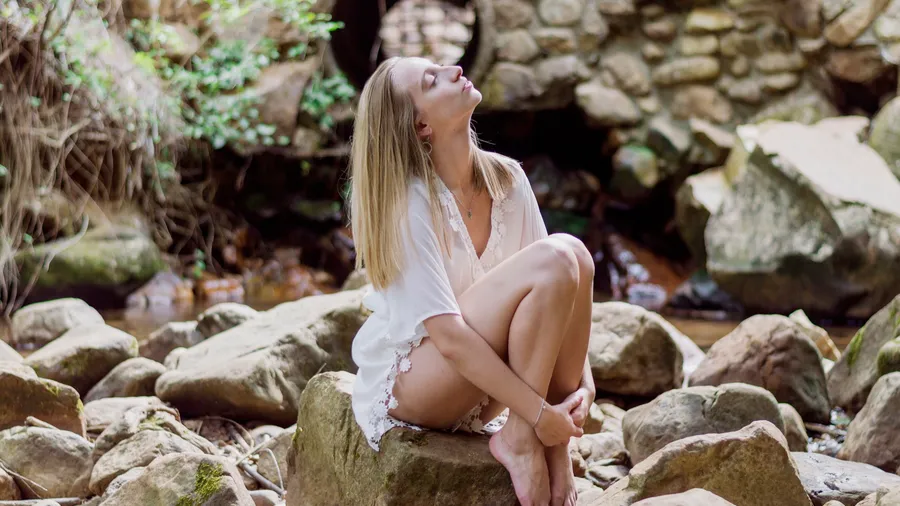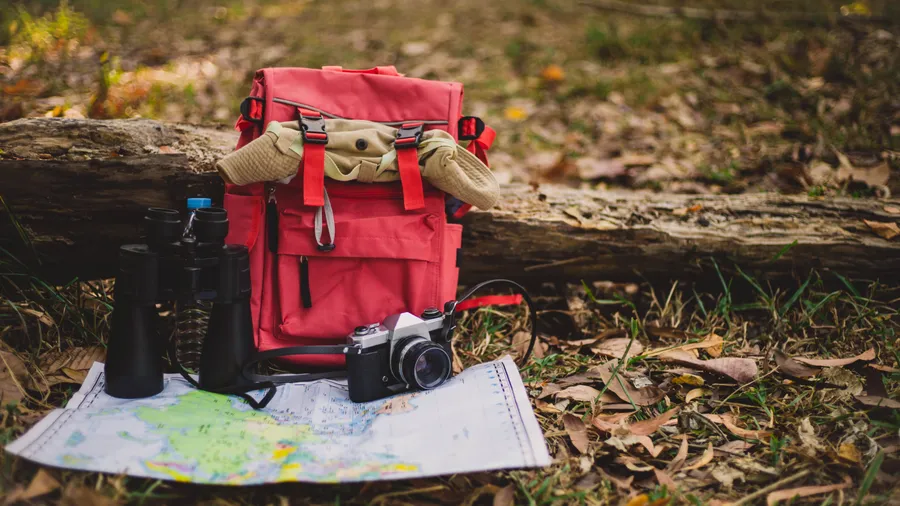3-Day Circular Pyrenees Route: Complete Trekking Guide
Introduction
A three-day circular route through the Pyrenees is the perfect escape to disconnect without being away too long. This guide takes you through the Benasque Valley, one of the most spectacular corners of the Aragonese Pyrenees, with crystal-clear mountain lakes, welcoming mountain refuges, and breathtaking landscapes. The circular itinerary allows you to return to your starting point without retracing your steps, visiting the Estós Refuge, the Ibonet de Batisielles, and La Renclusa Refuge. With medium-high difficulty and a cumulative elevation gain of around 2,800 meters total, it's an accessible route for hikers with some experience. Here you'll find all the practical information: detailed map, refuge reservations, what to pack, and how to get around the area. If you're looking for an authentic mountain adventure, far from the pavement and close to the peaks, this route awaits you.
Why This Circular Route is Perfect in 3 Days
Balance Between Effort and Scenery
Three days is just the right amount of time to immerse yourself in the mountains without the rush of a day hike or the commitment of a full week. Each day involves 5 to 7 hours of walking, giving you time to enjoy the scenery, take photos at the mountain lakes, and reach the refuge without stress. The circular format saves you the logistics of organizing return transport: you start and finish at the same point, with your car waiting for you. The Benasque Valley concentrates an impressive variety of terrain in a small space: black pine forests, alpine meadows, glacial moraines, high mountain lakes, and views of three-thousand-meter peaks like Aneto or Maladeta. According to data from the Posets-Maladeta Natural Park, this area receives over 80,000 visitors annually, but most stay on day routes, so sleeping in refuges takes you away from the crowds.
Mountain Refuges with Character
The two refuges on this route—Estós and La Renclusa—are authentic mountain houses where you share meals, conversation, and the day's exhaustion with other hikers. No impersonal hotels here: you have dinner at 8
PM in shared bunks, with wool blankets and the smell of hot soup. The Estós Refuge (1,890 m) has been managed by the Mur family for decades, with homemade cooking and a family atmosphere. La Renclusa Refuge (2,140 m), maintained by the Aragonese Mountain Federation, is the largest refuge in the Aragonese Pyrenees, with capacity for 120 people and direct views of Aneto. Both refuges require mandatory reservation (+34 659 076 688 for Estós; +34 974 553 158 for La Renclusa), especially in July and August, when they fill up 2-4 weeks in advance. Sleeping in a refuge is an essential part of the experience: you go to bed with the sun's rhythm and wake up with dawn over the peaks.Day-by-Day Itinerary: Details of Each Stage
Day 1: Benasque → Estós Refuge (5h, +900m)
You start from the La Besurta parking area (1,900 m), at the end of the road climbing from Benasque. The first 40 minutes run through dense black pine forest, with the Ésera River sounding to your left. The trail is wide, well-marked with stone cairns and GR-11 signs. As you gain altitude, the forest opens up and the meadows of the Estós valley appear, with views of Pico Perdiguero (3,222 m) closing the horizon. The Estós Refuge appears after a small climb, surrounded by pines and with a sunny terrace where the wardens dry mushrooms in autumn. If you arrive before 5
PM, you have time to climb up to Ibón de Batisielles (30 min more), a turquoise-water lake wedged between rock walls. Dinner is served at 8 PM: soup, hearty main course (stew or pasta), and homemade dessert. Price: included in the refuge rate (half-board around €40/person).Day 2: Estós → Ibonet de Batisielles → La Renclusa Refuge (7h, +1,100m)
This is the star stage, the longest and most demanding. You leave the refuge early (7:00-7
AM) with your headlamp on if it's summer. The trail climbs through the Batisielles Channel, a sustained hour-long ascent to the pass (2,520 m), where the valley opens up and the Ibonet de Batisielles appears, a tiny but photogenic lake, with the Aneto massif in the background. From the pass, you descend to the Escaleta Valley, a rocky descent that requires attention to your ankles. Mid-morning you reach the Puente de Coronas, where the GR-11 crosses with the path climbing to La Renclusa. The final ascent is long but gradual, zigzagging through a glacial valley with views of Maladeta. La Renclusa Refuge appears as a large stone building, with the Pyrenees flag flying from the roof. You arrive around 2:00-3 PM, in time to eat (sandwich from your backpack or meal at the refuge if you've reserved). You spend the afternoon resting, exploring the surroundings, or climbing to the Plan de Aigualluts to see the waterfalls and the source of the Garonne River.Day 3: La Renclusa → La Besurta → Benasque (4h, -800m)
The last day is more relaxed, almost all downhill. You leave the refuge after breakfast (7:30-8
AM) and descend on the wide path down to the Benasque Valley, passing the Hospital de Benasque (ruins of an old pilgrim hospital) and the Llanos del Hospital, a green meadow where cows graze in summer. The trail becomes a forestry track upon reaching La Besurta, where you retrieve your car. If you have energy left, you can extend the route by passing through the Forau de Aigualluts, a karst sinkhole where the river disappears underground to reappear in the Aran Valley. Route total: about 35 km and 2,800 m of cumulative positive elevation gain over 3 days.Map and Key Waypoints
GPS Reference Points
- La Besurta (start/finish): 42.6847° N, 0.6258° E (1,900 m)
- Estós Refuge: 42.6589° N, 0.6142° E (1,890 m)
- Batisielles Pass: 42.6456° N, 0.6089° E (2,520 m)
- Puente de Coronas: 42.6378° N, 0.6312° E (2,150 m)
- La Renclusa Refuge: 42.6492° N, 0.6458° E (2,140 m)
- Hospital de Benasque: 42.6712° N, 0.6389° E (1,750 m)
We recommend downloading the GPX track on Wikiloc (search "Circular Benasque 3 days") and carrying it on your phone with the offline app. The essential map is the Alpina E-25 "Aneto-Maladeta" (1
,000 scale), covering the entire area with detailed contour lines. The refuges usually sell these maps, but it's better to buy it beforehand at specialized stores or at the Benasque tourist office.Signage and Navigation
The GR-11 (trans-Pyrenean trail) crosses the entire route and is marked with red and white stripes on rocks and trees. Signage is generally good, but in areas with snow or fog, you should use GPS. Stone cairns (small piles of rocks) mark the path in areas without vegetation. If you get off track, return to the last visible cairn and reorient yourself. In the Batisielles Channel and the descent to Escaleta, the terrain is more technical and requires concentration, especially with a loaded backpack.
Important
This itinerary is for guidance only. Times and distances may vary depending on weather conditions, trail conditions and individual fitness levels. Assess your capabilities before starting the route. Mountain activities involve inherent risks - always go prepared with proper equipment. We are not responsible for accidents or incidents.
Refuges: Reservation, Services and Tips
Estós Refuge: Practical Information
- Altitude: 1,890 m
- Capacity: 60 (shared bunks)
- Contact: +34 659 076 688 (WhatsApp available)
- Dinner time: 8 PM
- Services: Hot water showers (€2), basic WiFi, phone charging, shop with drinks and snacks
- Reservation: Mandatory, especially July-August. Reserve 2-4 weeks in advance.
- Approximate price: €18/night (accommodation only), €40 (half-board: dinner + breakfast + accommodation)
The refuge opens from June to October, depending on snow conditions. Off-season (May, November) it may open on weekends if there's demand, but you should call ahead. The cooking is homemade and generous: you won't leave hungry. If you're vegetarian or have allergies, notify when booking.
La Renclusa Refuge: Practical Information
- Altitude: 2,140 m
- Capacity: 120 (bunks in 4-8 person rooms)
- Contact: +34 974 553 158 / info@renclusa.com
- Dinner time: 8 PM
- Services: Showers (€3), WiFi in dining room, bar with terrace, shop with mountain gear, basic infirmary
- Reservation: Mandatory, especially July-August. Reserve 2-4 weeks in advance.
- Approximate price: €20/night (accommodation only), €45 (half-board)
La Renclusa is the base refuge for climbing Aneto (the highest peak in the Pyrenees, 3,404 m), so in summer there's a lot of mountaineering atmosphere. The refuge has three floors, with spacious dining rooms and spectacular views from the terrace. A hot shower after 7 hours of walking is a luxury worth paying for.
When to Book Refuges?
Mountain refuges fill up quickly in high season. If you plan to go in July, August, or holiday weekends (Easter if there's no snow, August 15th), book at least 2-4 weeks in advance. In June and September there's more flexibility, but don't get complacent: a sunny weekend can fill any refuge. If the refuges are full, you can bring a tent (camping allowed near refuges in designated areas), but it's less comfortable and adds weight to your backpack.
What to Bring: Essential Gear List
Clothing and Footwear
- Hiking boots with high ankle and Vibram sole (rocky terrain)
- 40-50 liter backpack with rain cover
- Layered clothing: technical shirt, fleece, waterproof windbreaker
- Long hiking pants (avoid jeans)
- Hat and gloves (even in summer it can snow on passes)
- Sunglasses and cap for high mountain sun
- Change of clothes for sleeping in refuge (sleeping bags not mandatory, refuges provide blankets)
Technical Gear and Safety
- Trekking poles (reduce impact on knees during descents)
- Headlamp with spare batteries (early starts and reading in bunk)
- Basic first aid kit: band-aids, anti-inflammatory, sunscreen (factor 50), insect repellent
- Charged phone with downloaded GPX and power bank
- Whistle (mountain emergency signal: 3 blasts = SOS)
- Emergency blanket (weighs 50 grams, can save lives)
Food and Water
- Water bottle or hydration bladder with minimum 1.5 liters (refill at refuges and trail fountains)
- Water purification tablets (optional, mountain spring water is usually drinkable, but better safe)
- Energy snacks: nuts, bars, chocolate, dried fruit
- Trail sandwiches (refuges prepare sandwiches if you notify the night before, €5-6)
You don't need to carry a stove or cooking food: refuges provide dinner and breakfast, and you can buy sandwiches there. This saves you weight in your backpack, which you'll appreciate on the climbs.
Best Season for the Circular Route
Summer: July and August
These are the months with the best weather and highest visitor numbers. Temperatures at the refuges are around 15-20°C during the day, dropping to 5-10°C at night. The mountain lakes are ice-free and the water has that intense turquoise color. Downside: full refuges, busier trails, afternoon electrical storms (common in the Pyrenees). If you go in August, leave early in the morning to reach the passes before 2
PM, when clouds form.June and September: Ideal Season
Fewer people, quieter refuges, sometimes lower prices. In June there may still be snow patches in the Batisielles Channel (requires light crampons or microspikes), but the scenery is spectacular with alpine flowers blooming. September is perfect: stable weather, mild temperatures, autumn colors in the forests. Refuges close in mid-October, so confirm dates before going.
Spring and Late Autumn: Experts Only
From April to May and from November onwards, the route requires snow experience, crampons, ice axe, and knowledge of winter navigation. Refuges are usually closed (although La Renclusa sometimes opens the "winter refuge," an unguarded area with basic bunks). Only recommended for experienced mountaineers.
Difficulty Level and Physical Preparation
Who is This Route For?
Difficulty: Medium-High. This isn't a route for absolute beginners, but you don't need to be an athlete either. If you hike regularly (at least once a month), have good cardiovascular fitness, and aren't intimidated by long climbs, this route is for you. The total elevation gain (2,800 m over 3 days) is distributed so no single day is insurmountable, but day 2's stage is demanding: 7 hours with a loaded backpack. If you doubt your fitness level, consider hiring a mountain guide who can adjust the pace and advise you.
Prior Training
Two months beforehand, start walking with a loaded backpack (10-12 kg) on trails with elevation gain. Climb stairs, do day routes in nearby mountains. Strengthen ankles and knees: the rocky Pyrenees terrain is tough on joints. If you're not used to sleeping in refuges, try it beforehand on a weekend route to learn how your body reacts to sustained effort.
Mountain Safety: Key Tips
Weather and Storms
Check the weather forecast before leaving (AEMET has specific forecasts for the Pyrenees) and ask the refuge warden each morning. Summer electrical storms are dangerous on passes and summits: if you see dark clouds approaching, descend immediately to low areas, stay away from ridges, and avoid sheltering under isolated trees. If a storm catches you in the open, crouch on your heels (fetal position), keeping your feet off the ground as much as possible, and wait for it to pass.
Altitude Sickness and Hydration
Although you don't reach extreme altitudes, some sensitive people may notice mild altitude sickness above 2,500 m (headache, nausea). Drink water constantly (at least 2-3 liters per day), eat something every 2 hours, and don't force the pace: walk slowly and breathe deeply. If symptoms worsen, descend immediately.
Emergencies and Rescue
In case of accident, call 112 (general emergency) or 062 (Guardia Civil – GREIM, mountain rescue specialists). Give your exact GPS position, describe the situation, and follow instructions. Refuges have first aid kits and staff trained in first aid. The rescue helicopter operates from Benasque, but weather conditions can delay intervention: prevention is always better than cure.
How to Get to the Benasque Valley
From Madrid (500 km, 5h)
Take the A-2 toward Zaragoza, then the A-23 toward Huesca and continue to Graus. From Graus, the A-139 takes you directly to Benasque (45 min of curves). The road is well paved, but watch out for weekend traffic in summer.
From Barcelona (300 km, 3h30)
A-2 toward Lleida, then N-230 toward the Vielha tunnel. Before reaching the tunnel, take the turnoff to Benasque via the N-230a. Alternative route: through the Vielha Tunnel and down through the Aran Valley, but it's longer.
Public Transport
There are buses from Zaragoza and Lleida to Benasque (Alosa company), but with limited frequency (1-2 per day). From Benasque, in summer there's a bus service to La Besurta parking area (check schedules at the Benasque tourist office), which saves you from driving the last 8 km on a narrow road.
Route Alternatives and Extensions
Adding Aneto (Extra Day)
If you have an extra day and experience in high mountains, from La Renclusa you can climb Aneto (3,404 m), the highest peak in the Pyrenees. Requires crampons, ice axe, harness, and glacier knowledge (the Mahoma passage is a small glacier with crevasses). Time: 8-10h round trip from La Renclusa. If you lack experience, hire a certified guide: the mountain doesn't forgive mistakes.
Shorter Route: 2 Days without Renclusa
If you only have a weekend, you can do a reduced version: Benasque → Estós Refuge (day 1), Estós → Ibonet de Batisielles → return to La Besurta via the same path (day 2). You lose the circular part and the visit to La Renclusa, but you still enjoy the mountain lakes and Estós Valley.
Combination with Aran Valley
From La Renclusa Refuge, you can cross to the Aran Valley via Puerto de la Picada (2,475 m) and descend to Artés de Lin or Salardú. This converts the route to linear (you need to organize return transport or leave a car at each end), but adds variety of landscapes and charming villages.
Where to Eat and Sleep in Benasque (Pre and Post Route)
Before and after the route, Benasque town offers options to celebrate or recover. Hotel Ciria (3-star, central, with spa) is ideal for treating yourself post-trek. Restaurante El Fogaril serves hearty Aragonese cuisine: lamb, migas, chireta. For tapas, Bar Avellanas has homemade croquettes and Somontano wines. If you're looking for something more economical, Camping Aneto is 2 km from town, with bungalows and barbecue areas.
Environmental Impact and Responsible Mountaineering
The Pyrenees is a protected natural area: respect the rules of the Posets-Maladeta Natural Park. Don't leave trash (not even orange peels: they take months to decompose in high mountains), use refuge bathrooms (don't relieve yourself near lakes or springs), and stay on marked trails to avoid eroding the terrain. Mountain lakes are fragile ecosystems: don't bathe in them (soap and sunscreen pollute the water). If you see abandoned trash, pick it up even if it's not yours: the mountain belongs to everyone and we all take care of it together.
Total Budget: How Much Does the Route Cost?
Estimate for 1 Person (3 Days)
- Refuges (2 nights half-board): €80-90
- Extra meals (sandwiches, snacks): €20-25
- Gas (round trip from Madrid, example): €60
- La Besurta parking: Free (public parking)
- Gear (if you have nothing): €200-400 (boots, backpack, poles... but it's an amortizable investment)
- Mountain insurance (FEDME or similar): €50/year (optional but recommended)
Total route without gear: €160-175 per person. If you go in a group and share a car, costs go down. If you hire a mountain guide (recommended if it's your first multi-day route), the price rises to €150-250/person in groups of 4-6 people, but includes safety, experience, and anecdotes from someone who knows every stone in the valley.
Conclusion: Your 3-Day Pyrenees Adventure
A three-day circular route through the Benasque Valley is much more than kilometers and elevation gain: it's the privilege of waking up with the sun illuminating Aneto, sharing a table with strangers who become rope companions, and returning home with tired legs but a recharged soul. The mountain lakes, refuges, snow-capped peaks, and high mountain silence await you just a few hours from major cities. With proper preparation, timely reservations, and respect for the environment, this route becomes one of those experiences you talk about years later. So load your backpack, adjust your boots, and let the Pyrenees show you why the mountains are addictive.
